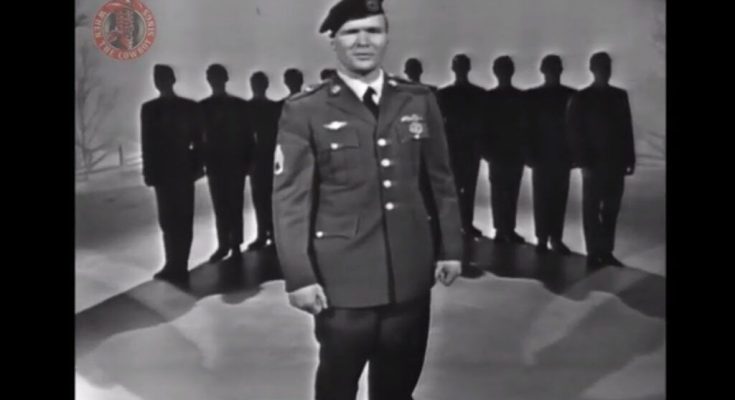“The Ballad of the Green Berets” is a patriotic song in the ballad style, written by Robin Moore and Staff Sgt. Barry Sadler. It was released in 1966 during the heart of the Vietnam War and quickly became a popular anthem in the United States. The song pays tribute to the Green Berets, an elite group within the U.S. Army Special Forces, known for their distinctive service headgear and exceptional skill set.
Staff Sgt. Barry Sadler, the co-writer and performer of the song, was himself a Green Beret medic. He wrote the song while recovering from a leg wound he received during his service in Vietnam. The song’s straightforward, narrative style and its focus on the bravery and sacrifice of the soldiers struck a chord with the American public. It celebrated the Special Forces and their role in the ongoing conflict, reflecting the sentiments and respect of the American people towards their military during a tumultuous period in U.S. history.
“The Ballad of the Green Berets” quickly rose to the top of the Billboard Hot 100 chart, where it remained for five consecutive weeks. Its success underscored the divide in American sentiment about the Vietnam War, resonating with those who supported the military’s role overseas. Unlike many popular songs of the era that criticized the war and its consequences, Sadler’s work was a clear and direct tribute to the fighting forces.
The song’s lyrics emphasize the valor and integrity of the Green Berets, describing them as fearless men who are always first to fight. They are portrayed as true heroes who ask for little recognition in return for their service and sacrifice. The chorus, “These are men, America’s best,” sums up the high regard in which these soldiers are held. The song also touches on the pain of loss and the pride that comes with serving the country, themes that are deeply resonant with military families as well as the broader public.
Beyond its impact as a piece of music, “The Ballad of the Green Berets” also played a role in shaping public perceptions of military conflicts. It provided a counter-narrative to the anti-war sentiments that were spreading across the country, bolstered by the counterculture movement of the 1960s. The song’s message was straightforward and compelling, providing a voice to those who felt that the sacrifices of the military should be honored and respected.
Barry Sadler’s personal story is also noteworthy. After his military service and the success of his song, Sadler’s life took various turns. He wrote several novels and continued to record music, although he never replicated the monumental success of “The Ballad of the Green Berets.” His life was marked by both personal challenges and triumphs, and he remained a figure of significant interest due to his military service and musical career.
Sgt. Barry Sadler’s contribution to music and his portrayal of military life through “The Ballad of the Green Berets” have left a lasting legacy. His work is remembered for its emotional depth and its straightforward celebration of the courage and sacrifice of soldiers. The song remains one of the most recognizable military anthems in the United States, a testament to its powerful impact and the complex times during which it was created.
Overall, “The Ballad of the Green Berets” stands as a significant cultural artifact of the 1960s, reflecting the era’s conflicted feelings about war, duty, and patriotism. It encapsulates a period when music increasingly became a vehicle for political expression and personal identity, serving as a poignant reminder of the sacrifices made by military personnel and the complexities of the American experience during the Vietnam War.



